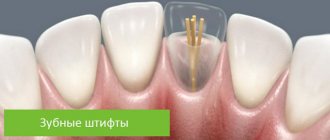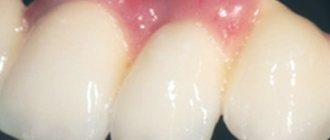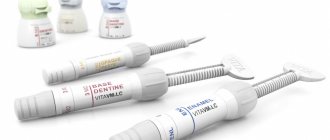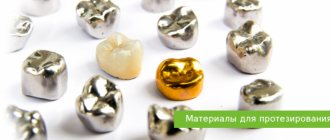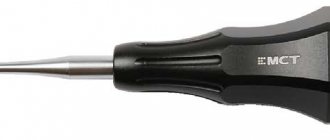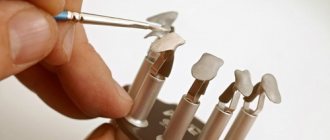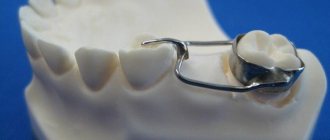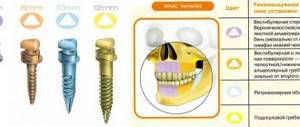Osteoplasty is one of the most popular operations in maxillofacial surgery. Most often it is used to prepare the patient’s jaw for dental implantation. The need for bone grafting is explained by the fact that due to various dental pathologies or the long-term absence of a large number of teeth, the bone tissue undergoes atrophic processes and becomes thinner. Since for installation and good stabilization of the implant the bone must meet certain characteristics (sufficient height and strength), osteoplasty becomes the best option for solving the problem of bone deficiency.
Bone grafting is considered a safe and effective procedure and is widely practiced throughout the world. In addition to careful preparation for the intervention, high-tech equipment and the skill of the maxillofacial surgeon, it is necessary to use high-quality bone materials to achieve the desired final result. Modern dentistry has many methods of bone growth, using different types of bone materials. There are biological and synthetic bone materials, which have their own advantages and disadvantages. After identifying the indications for surgery and conducting a comprehensive diagnosis, the dentist will recommend the most suitable bone material for the patient.
Application in dentistry
According to statistics, most patients require bone grafting before restoring their dentition. Bone atrophy is a common pathological process that is both a cause and a consequence of premature tooth loss. The decrease in volume and acquired fragility of bone tissue leads to the fact that it is almost impossible to effectively implant teeth without prior bone augmentation. The consequences of tooth loss and thinning of the jaw bone tissue are:
- violation of chewing function and, as a result, problems with the digestive tract;
- violation of the location of other teeth;
- changes in the configuration of the facial part of the skull, premature appearance of wrinkles;
- speech disorder;
- the formation in the oral cavity of conditions conducive to the rapid spread of pathological processes.
To avoid the above-mentioned unpleasant consequences of tooth loss, you should promptly contact your dentist and consult about options for restoring your dentition. Dental implantation is the most reliable way to regain a healthy and radiant smile, however, if there is a deficiency of bone tissue, you must first undergo bone grafting.
There are different types of osteoplasty, and the choice of one of them depends on the clinical picture, the presence of medical indications and contraindications for the patient. Thanks to the development of science and technology, modern bone grafting is minimally invasive and has a low risk of postoperative complications. The main purpose of this intervention is to fill the bone deficiency by installing an autograft or introducing special synthetic bone materials. Bone grafting using synthetic bone materials is a popular procedure and is not inferior in effectiveness to bone grafting using biological materials. There are various synthetic preparations for osteoplasty on the modern market, each of which has its own advantages and indications for use.
Recommendations for the recovery period
The recovery period after osteoplasty lasts up to 3-4 weeks.
Before removing the sutures, the doctor recommends:
- abstain from food for 2 hours after surgery;
- give preference to crushed products;
- consume drinks through a straw;
- stick to a diet;
- chew food on the side that has not undergone intervention;
- refuse physical activity;
- After each meal, treat the oral cavity with antiseptic solutions, for example Miramistin.
If bleeding or pain is observed after surgery, the specialist recommends symptomatic therapy to the patient.
Postoperative recommendations will reduce the risk of complications after osteoplasty.
After 10-14 days, the sutures are removed. After this, patients are recommended for another 2 weeks:
- refuse air travel;
- from visiting crowded places during viral epidemics;
- from visiting baths and saunas;
- from eating hot, sour or spicy foods.
Note! A relative contraindication to plastic surgery is smoking. The fact is that nicotine leads to a narrowing of the capillaries through which the bone graft is supplied with blood. Because of this, implant rejection may occur.
How is plastic surgery performed using synthetic material?
Synthetic bone materials are widely used when performing sinus lifting, as well as for targeted bone regeneration. Both types of intervention are performed under local anesthesia, however, if the patient is very worried, then drug sedation may be used.
Sinus lift
During the sinus lift procedure, the lower wall of the maxillary sinus is displaced upward in order to free up space for the insertion of bone material. This operation is performed if it is necessary to implant implants in the area of the chewing teeth in the upper jaw. Since chewing teeth must cope with significant loads during the process of chewing food, it is necessary to install reliable implants and provide them with good fixation. Bone augmentation surgery can be performed either open or closed, depending on the clinical picture.
When synthetic bone materials are used during an open approach procedure, it is called a modified sinus lift. This procedure has gained great popularity among both doctors and patients, but it is performed only if the height of your own bone is at least 4-7 mm. The operation is performed in several stages:
- providing local anesthesia;
- accessing the bone by cutting and folding a flap of soft tissue;
- displacement of the bottom of the maxillary sinus upward;
- filling the free space with synthetic bone material, which is granules or powder;
- suturing.
The intervention is safe and takes little time. The timing of bone tissue regeneration is individual, so the timing of installation and loading of the implant is determined strictly on an individual basis.
Guided Bone Regeneration Method
With directed bone regeneration, a special granulated bone material is used, as well as a resorbable membrane for its fixation. The purpose of the procedure is to stimulate the regeneration of your own bone tissue for good stabilization of the implant.
In some cases, when atrophic processes are not clearly expressed, an implant is implanted along with the replanting of synthetic bone material. The main advantage of the method is considered to be low-invasiveness and ease of implementation. The bone regeneration process takes on average about 6 months, after which the prosthesis can be installed and gradually loaded.
Price
The cost of bone augmentation depends on the material used and the method of performing the operation.
The price is negotiated before the procedure. On average, the cost of a closed sinus lift varies from 15-35 thousand rubles. The price for an open type of operation is up to 6 thousand rubles.
The cost of other types of operations is presented in the table
| Intervention method | Price in rubles |
| Splitting of the alveolar process | From 15,000 for 2 units excluding the cost of materials |
| Bone block transplantation | From 35,000 including transplant collection |
| Tissue regeneration | From 25,000 for 2-3 units |
Advantages and disadvantages of synthetic bone materials
Synthetic preparations for bone grafting were developed back in the 60s of the last century. Numerous studies have confirmed the effectiveness and safety of synthetic bone materials for medical use. The main advantages of synthetic drugs in dental surgery include:
- High affinity for bone tissue;
- Biodegradability;
- Easy to use for correction of bone defects;
- Sterility and minimizing the risk of postoperative infectious complications;
- Good survival rate;
- Durability;
- Accelerating the process of regeneration of your own bone tissue;
- Low risk of allergic reactions;
- Absence of trauma, which is inevitable when using autotransplants.
Advanced technologies are used to develop synthetic osteoplastic preparations; a number of studies are also carried out in the field of biochemistry and molecular biology, thanks to which the properties of synthetic materials for bone grafting are improved. The wide range of synthetic osteoplastic materials on the modern market allows each patient to choose an affordable drug that meets all his requirements. The choice of quality synthetic bone material is very important to achieve a good final result. Depending on the existing dental problem, the doctor will recommend an osteoplastic material that is better suited in this particular case.
There are not many disadvantages of synthetic bone materials, and the most important of them is considered to be low osteoinductive properties. Autografts have a pronounced ability to stimulate the growth and regeneration of bone tissue, however, when using the patient’s own bone tissue, dentists are faced with such difficulties as the risk of infection and trauma to healthy tissue when collecting an autograft. Synthetic bone materials do not have such a strong effect on regeneration, but create a reliable matrix for the patient’s bone tissue and thereby provide favorable conditions for its growth and restoration.
What are synthetic materials for osteoplasty made of?
Hydroxyapatite is one of the first substances to be used in dental osteoplasty. Due to its properties, it has a high affinity for natural bone and is its mineral analogue. Based on this substance, modern bone materials are created that have good immune compatibility and high bioactivity.
In modern dental surgery, synthetic resorbable materials are also widely used, which, in addition to their properties suitable for replacing bone defects, are affordable. These include drugs based on:
- tricalcium phosphate;
- bioglass;
- calcium phosphate;
- chondroitin sulfate;
- calcium sulfate.
The most popular drugs on the domestic market are “Bios” from “Alpha Bio”, “Cerasorb”, “Ostim-100”, “GAP 85-D” and others. The choice of drug is made after a thorough diagnosis and determination of the properties of the patient’s own bone tissue.
Cerasorb
This German-made drug is widely used by dental surgery specialists around the world. The drug is based on tricalcium phosphate compounds, which make it easy to restore bone defects. The drug is completely absorbable and has the following characteristics:
- high bioavailability;
- no trauma to nearby tissues during resorption;
- has good bioactivity;
- stability;
- safety of use;
- ease of use.
This drug is used in leading clinics around the world and has proven its high effectiveness.
Alpha-Bio's GRAFT
The main advantages of this drug for osteoplasty are its affordable price combined with excellent characteristics. The safety and effectiveness of this drug has been confirmed by clinical trials; when using GRAFT synthetic bone material, there is no risk of infection with pathogenic viruses and bacteria, rejection and the development of individual intolerance. It is a complete analogue of natural bone tissue; the drug contains hydroxyapatite and tricalcium phosphate compounds. Provides good stabilization during the regeneration of the patient's own bone tissue and is easy to use.

